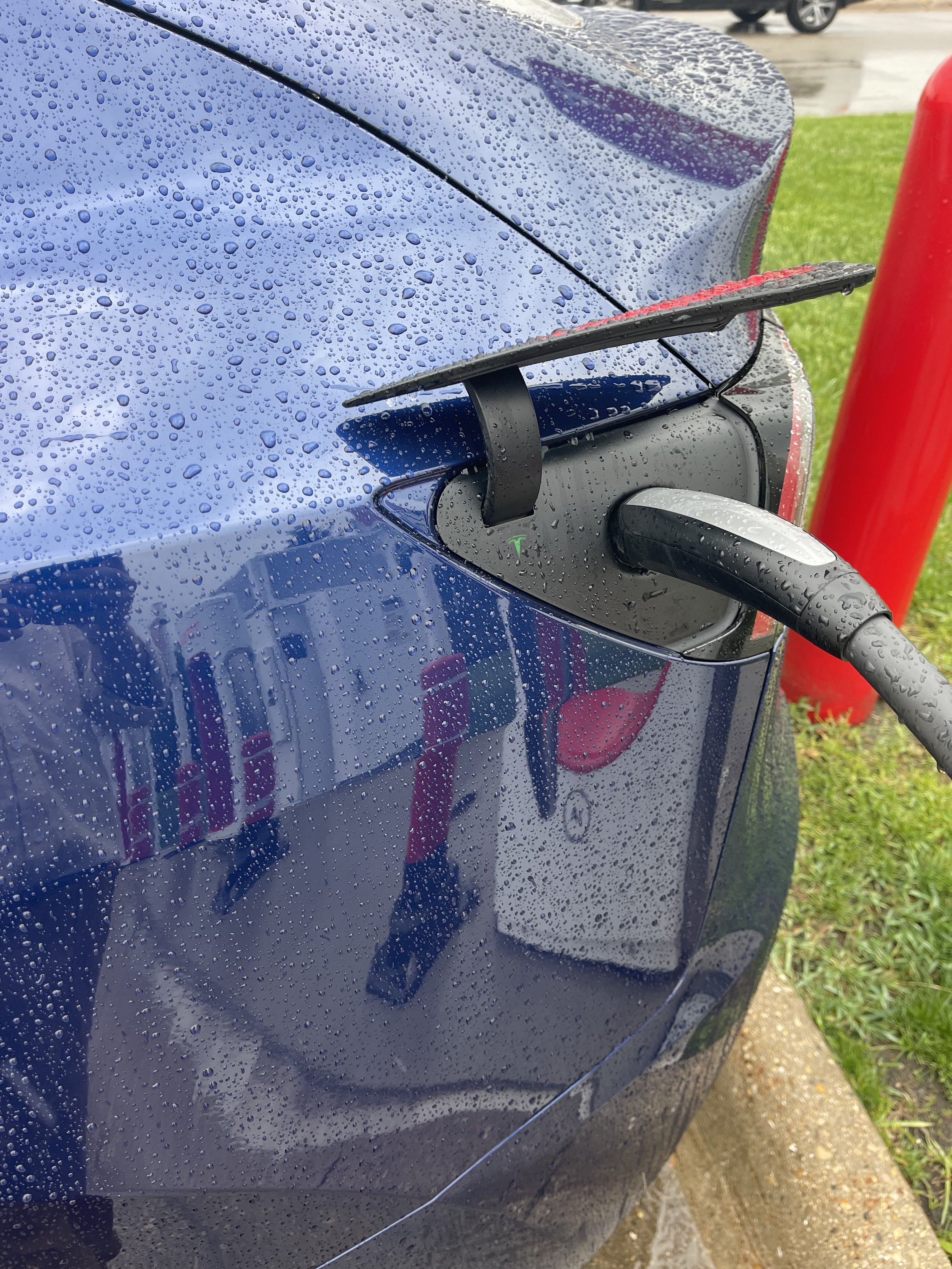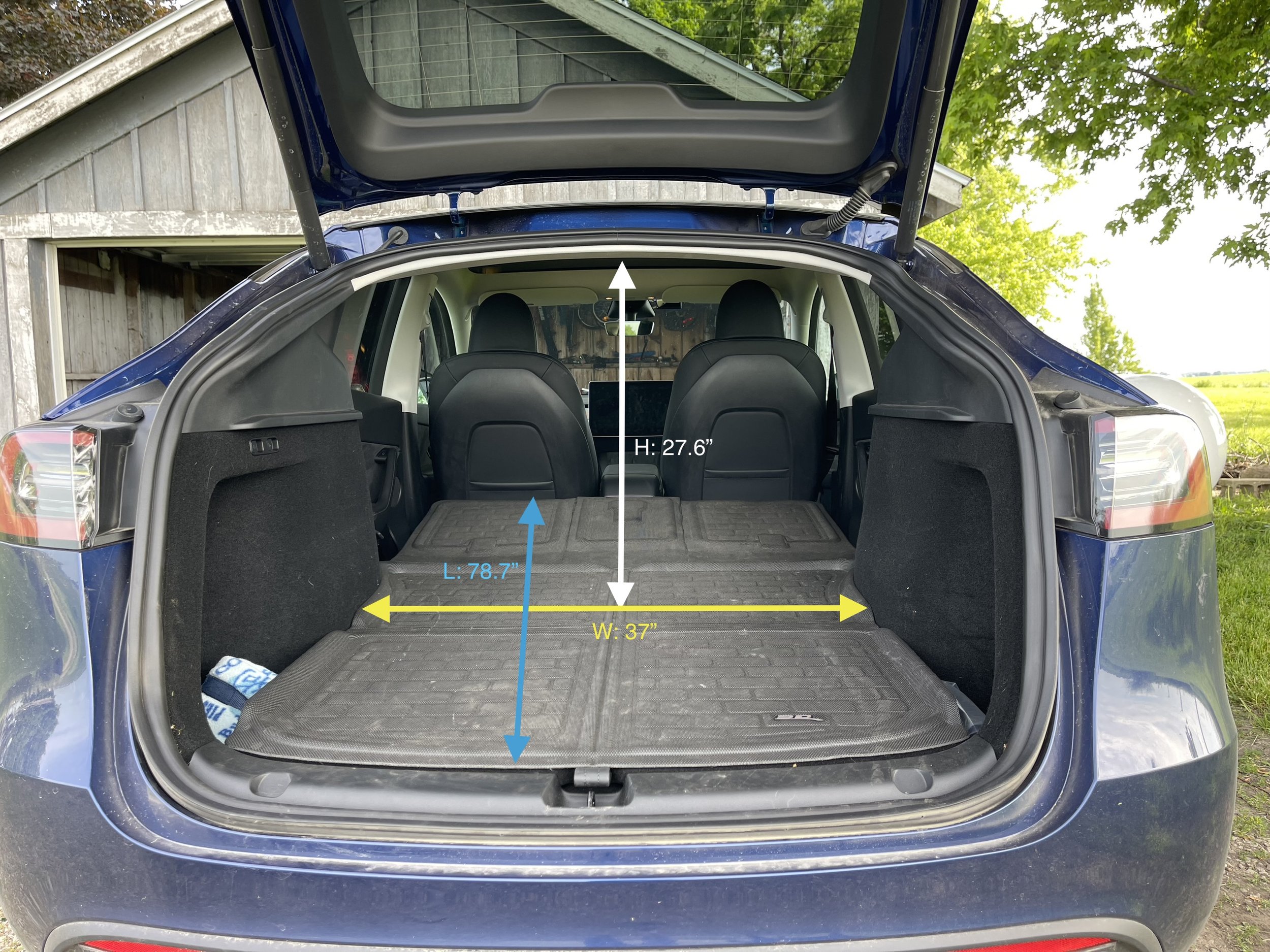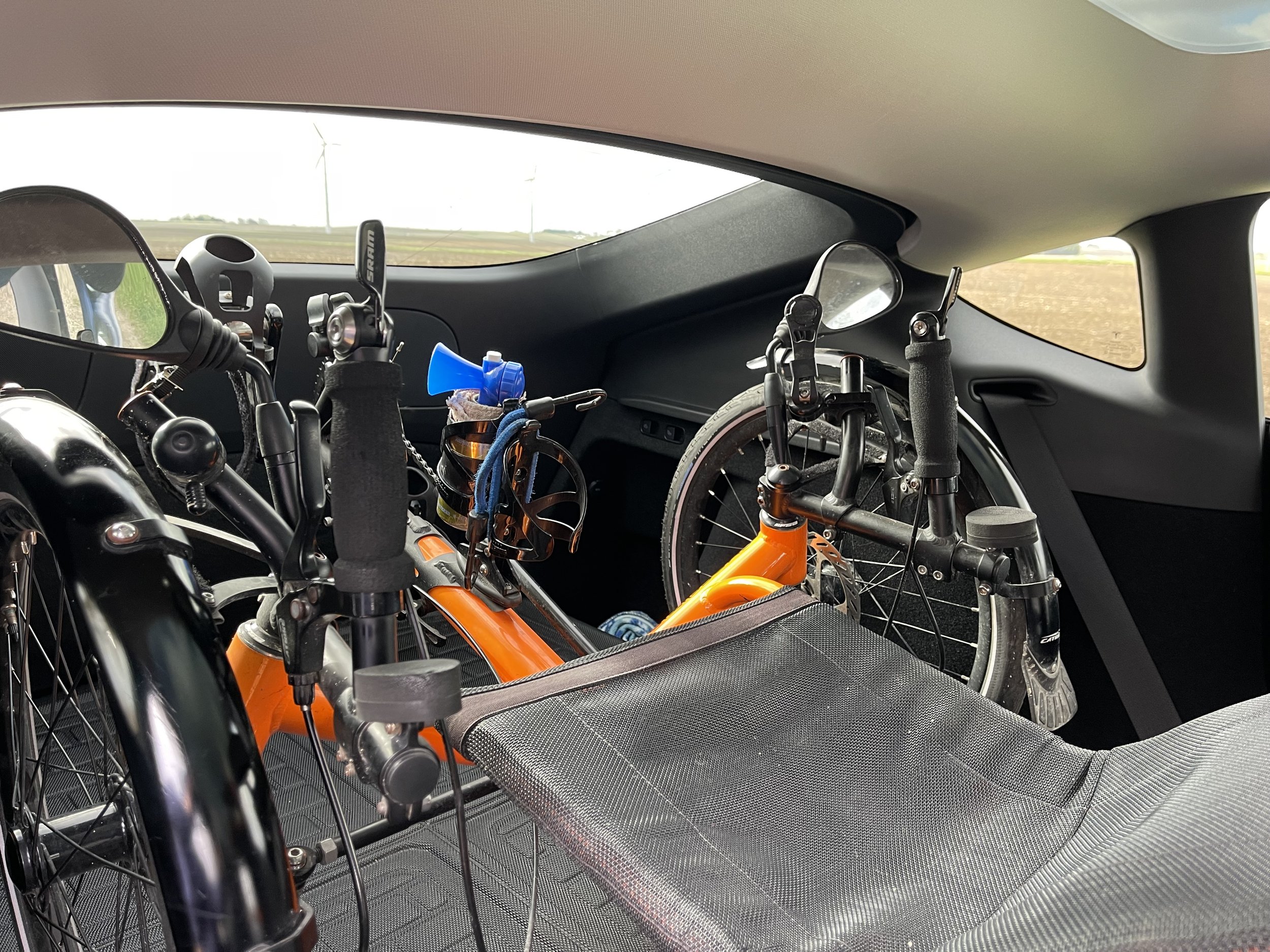I am now three months in on ownership of my Tesla Model Y Long Range (MYLR). Seems like a good point to take a look in and see how things are going.
Usage
As I indicated originally, my primary purpose for this vehicle is as a work car, and that has been the bulk of its activity thus far. I’ve driven it back and forth to my primary worksite a handful of times - about a 60 mile round trip. I’ve been down to Springfield, IL on one occasion, and I’ve taken work trips into the wilds of Wisconsin as well, into the Janesville, Madison, and Milwaukee areas. My longest single-day round trip was 431.9 miles.
As of this writing the car has 3,649 miles on it. It had 15 miles on it when I picked it up, so I’ve put 3634 miles on the car myself.
That calculates out to 1211 miles per month, which puts me on track for an annual mileage of just over 14,500/year. This will probably seem like a lot to some people, but it’s actually in the neighborhood of about half of my pre-pandemic work mileage. I use cars pretty hard.
Charging and Costs
One of the biggest questions people will wonder about is what the car will cost to operate. After all, you are plugging it into your house electricity, so while there are no costs for gasoline, there is cost on the electric bill. And I know that many of us are not fans of our electric companies…
Costs for charging are reflected in two separate areas: Cost for home charging, and cost for charging on the road.
Home charging is how the car gets powered up for the overwhelming majority of my usage. I’ve established a pattern where, when I get home at the end of the day I pull the car into the garage and plug it in to the home charger. Most of the time I have the car set to charge up to 90% (this is Tesla’s recommendation), and when I know I will have a longer trip, I bump that up to 100%. The car easily charges overnight - probably the longest home charging session I’ve had, bringing the car up from 23% to 90% after a longer trip, took just over 6 hours. If that seems like a long time, keep in mind that it’s all during time that you aren’t using the car - it would just be sitting in the garage either way.
Total home charging cost for the first three months is approximately $108.62.
It’s approximate because I don’t yet know exactly what my electrical costs will be for the last 2/3 of June, so I’m estimating based on the month before, but while it varies, it’s generally pretty similar from month to month.
To put that in context of the electric bill itself, that means an increase in electricity cost of about $36.20/month. So the electric bill does go up (of course). But I’ll compare that to equivalent gas costs below.
The majority of my trips are well within the range of the car, and as such have not required a lot of charging on the road. Still, I have had some longer trips - five, to be specific - that have made it necessary to stop at a supercharger.
And everywhere I’ve gone has had more than adequate support for charging on the road. Tesla’s Supercharger network was a major reason behind my choice of the MYLR, and it’s proven out thus far. With one exception, which was ultimately a learning experience for me, I’ve had no trouble locating a charger when needed, and often times I’ve found that there are options of more than one along the way. In my five stops I’ve only had one instance where the charger I plugged into did not appear to be working, and the one next to it did. And frankly, this is comparable to my experience with gas stations, where it’s not all that unusual to pull up to an open pump only to discover a bag over the handle, and realize that the pump was “open” because it’s out of service.
That learning experience? I learned that you want to be sure to have some information about the charger location before you go there. Because they are different from gas stations - no need for tanks in the ground - they can be just about anywhere. Often they’ll be in the parking lot of a hotel or a grocery store for example.
The navigation system in the car will guide you to the location, which is great the majority of the time. But on one occasion I followed the navigation system, and when it said that I’d arrived there was… nothing. I couldn't see any chargers in the area, nor an obvious spot for them - no large parking lots, for example. I drove around the block, up and down a couple of side streets, and just saw nothing.
Then I pulled over and googled the site I was at. It turned out that the charger was on the third floor of the parking garage I was driving around. Once I sorted that it was a non-issue. I drove up, charged, and it was fine. But I know now that I want to get the lay of the land ahead of time when I’m going to be stopping in an unfamiliar place.
This is not hard to do, incidentally. The navigation system figures in the charging stops when you put in your destination. You can easily know in advance where it will recommend that you stop. And it’s pretty conservative - it looks to me like it tries to keep you up around 10% or more at each charging stop, so you aren’t running on empty if you are having trouble figuring out where the charger is.
In fact, it’s so conservative that I have, on multiple occasions, turned off the charging points on the map (it lets you do this), and found that I can actually get home without making the charging stop it is recommending (albeit with a lower battery charge than some people might be comfortable with). They clearly want to ensure people don’t run dry on the road.
In terms of the charging experience itself, it’s been just fine. People sometimes express concern about how much longer it takes to charge a car versus filling up with gas. The thing to keep in mind here is that, in general, you are not filling up. Most of the time at a Supercharger you are just adding enough juice to get home. My charges have generally been less than 15 minutes long, which frankly just leaves enough time to get a bathroom stop in, and maybe grab a bottle of water. On one occasion I had lunch while the car was charging, and the car was done well before I was done eating (risking an “idle fee”, which was graciously waived because it was my first time).
So, all that said, what has it cost to charge on the road? $71.13
Over five stops that comes out to an average of $14.23/stop
Add that $71.13 into the $108.62 for home charging, and my total “fuel” cost for the car over the first three months comes out to $179.75, or just under $60/month ($59.91).
Comparison to Gas Equivalent
My prior primary car (which I still have) was a 2011 Subaru Outback with the 3.6L flat six-cylinder engine. I’d argue that this is a very comparable vehicle. The MYLR and the Outback are comparable in size (the other reason I chose the MYLR - room for my trike) and cargo capacity (the Tesla technically has more room, but that’s spread around multiple cubbies; the Outback is arguably more flexible for carrying large items). So I’ll use that for comparison.
Average regular gas price in the Midwest for April and May 2023 (June isn’t available yet) was $3.415/gallon. My average in the Subaru was 22.77 mpg. To travel the same 3,634 miles in the Subaru would have used 159.6 gallons. At $3.415/gal that would generate a cost of $545.03 over 3,634 miles. That’s $181.68/month.
So - I’ve saved $365.28 in fuel costs over the first three months of ownership, or about $121.77/month. Stated differently, the Subaru costs three times more to fuel up than the MYLR.
I should also note that these numbers are based on my mpg in the Subaru. The EPA rates the 2011 Outback at 20mph combined city/highway. I tend to drive for mileage, and I have a higher than usual percentage of highway driving than most. Your mileage, quite literally, may vary.
Needless to say, I’m pretty happy with all of this. I’m saving money in fuel costs, spending a lot less time at gas stations, and I have a vehicle that is always fueled up when I leave the house. Thanks to the Tesla Supercharger network I’ve experienced nothing like range anxiety - the car can get me to where I need to go.
I’ll write more about the general experience of owning and driving the car down the road. It’s probably pretty clear from what I have here that I’m pretty positive about the experience, but it isn’t perfect - there are flaws, and we’ll discuss those too.












